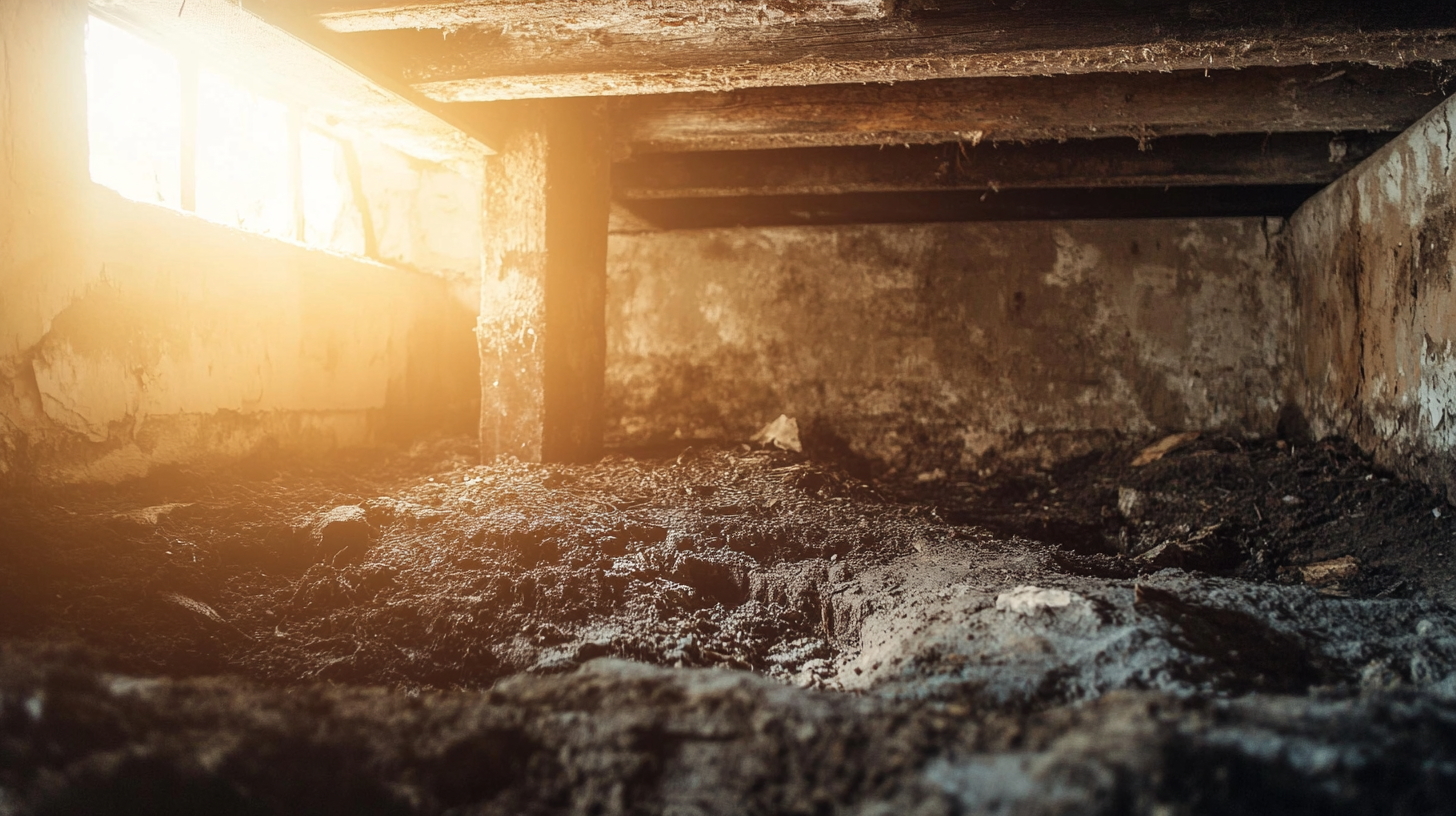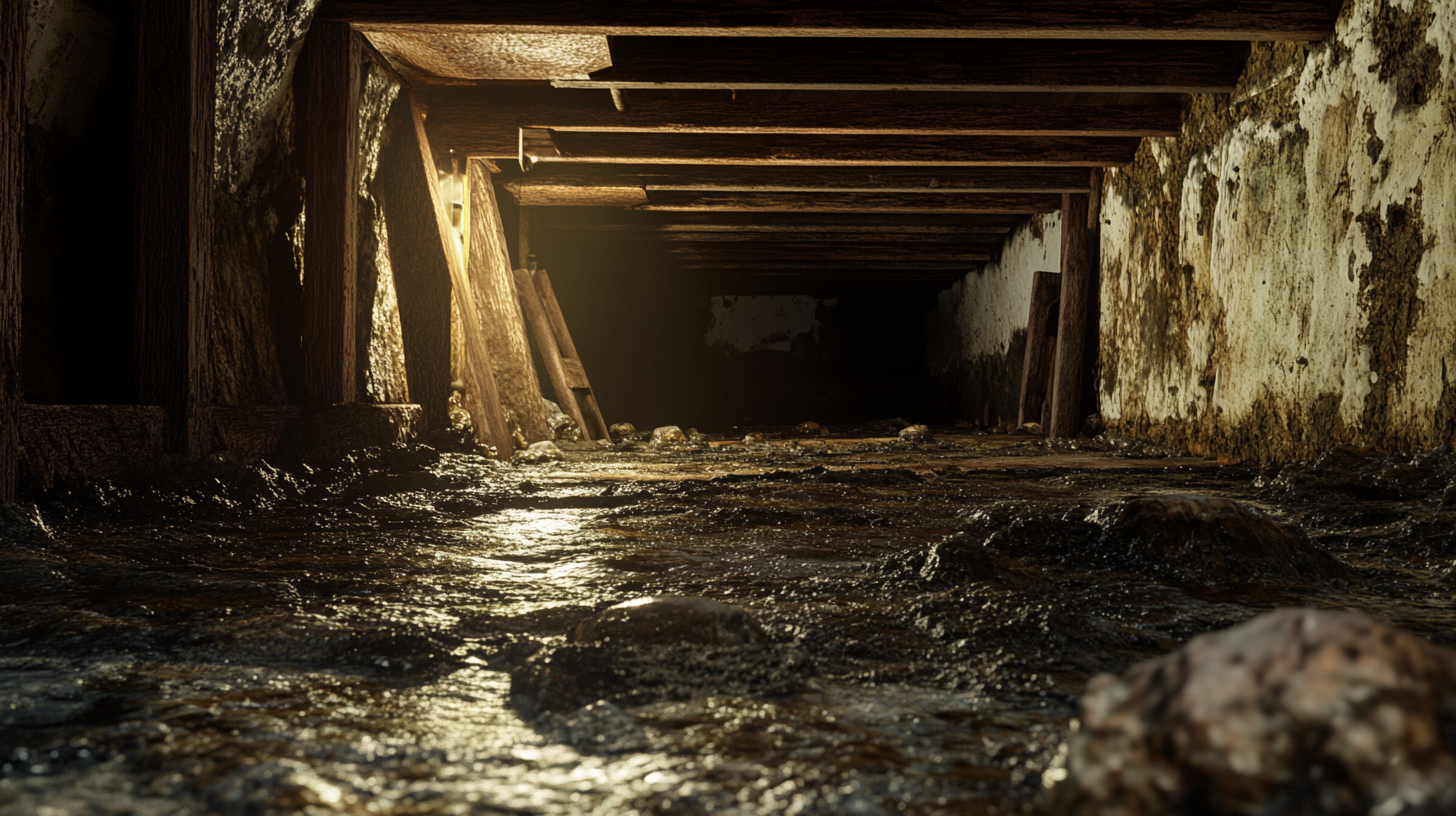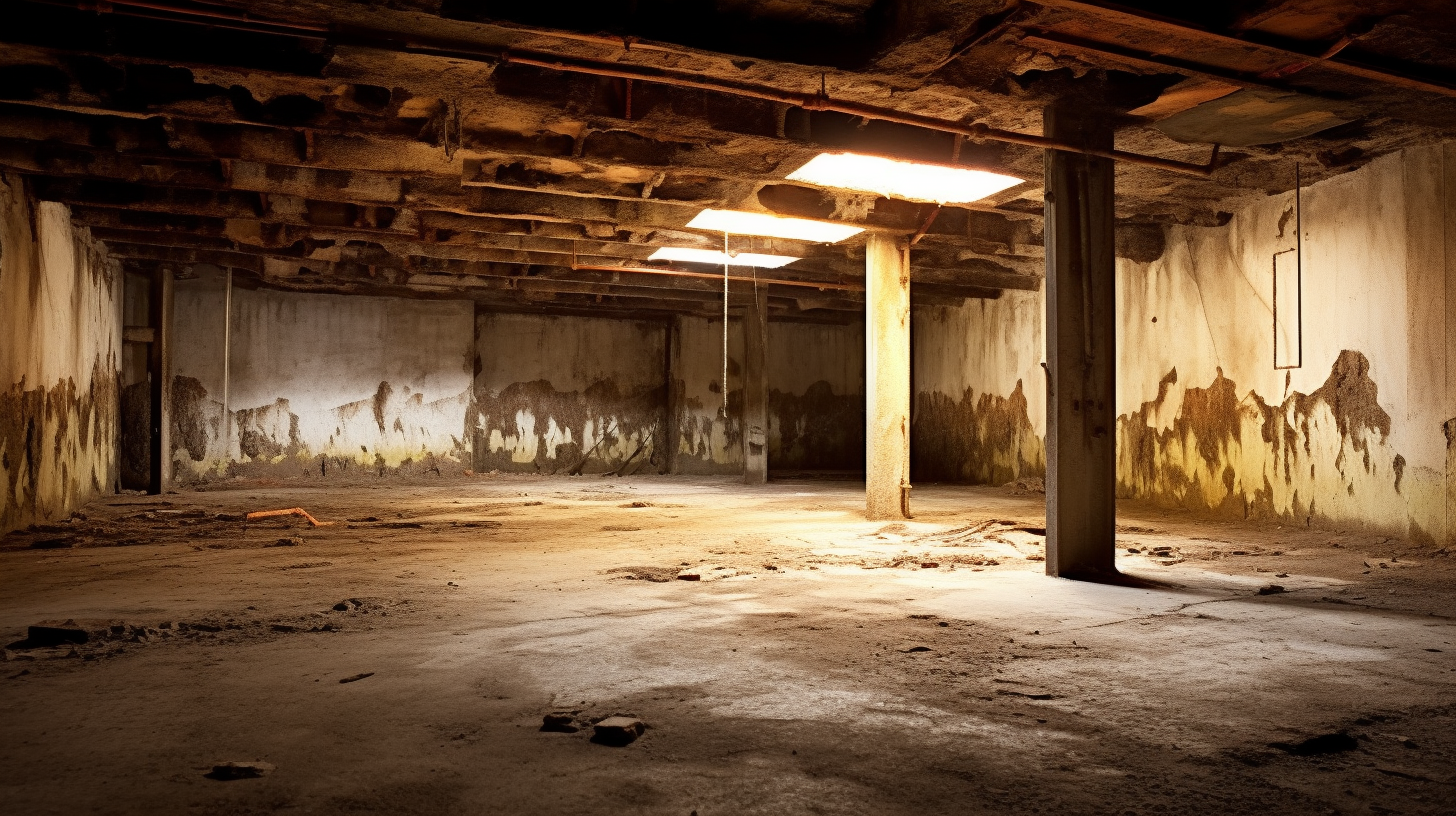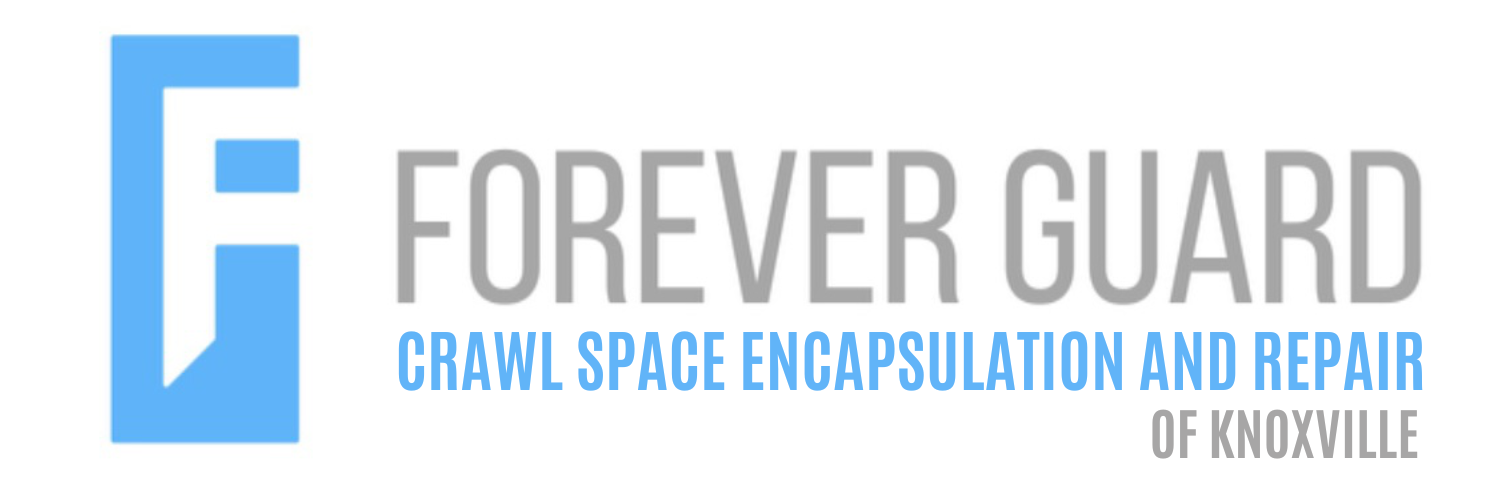Now IS THe Time To...

Crawl Space Services In Knoxville, TN
Stetson Howard: 865-432-6743
CRAWL SPACE ENCAPSULATION, REPAIR, WATERPROOFING & MOLD REMOVAL
No-Obligation, Free Inspections
No-Obligation Free Estimates
We Warranty All of Our Work
100% Satisfaction Guaranteed
Waterproofing is crucial in tunnels and subways, where constant exposure to groundwater, water pressure, and environmental stresses places significant demands on structural integrity. As subterranean structures, tunnels and subway systems are surrounded by soil and groundwater, which exert continuous hydrostatic pressure on their walls and foundations. Without effective waterproofing, this exposure can lead to water infiltration, structural weakening, corrosion of reinforcement elements, and ultimately, costly repairs or even safety hazards.
Effective waterproofing in tunnels and subways provides a long-lasting moisture barrier that prevents water ingress, protecting the structure from common issues like cracking, spalling, and efflorescence. Given the scale and complexity of these underground systems, waterproofing solutions must be highly durable and resistant to environmental factors, including freeze-thaw cycles, varying pH levels in groundwater, and other chemical exposures. Advanced waterproofing materials, such as crystalline solutions, liquid-applied membranes, and sheet membranes, are commonly used to create resilient barriers within these structures.
By incorporating robust waterproofing from the design and construction phase, tunnels and subways maintain their structural integrity, minimize maintenance needs, and ensure the safety and longevity of these essential transit systems. Let me know if you'd like additional sections.
The Importance of Waterproofing in Tunnels and Subways
Waterproofing is essential for the longevity and safety of tunnels and subways, as these underground structures are constantly exposed to groundwater and subjected to hydrostatic pressure. Positioned below the water table, tunnels and subway systems are naturally vulnerable to water infiltration, which can lead to structural degradation, corrosion, and the need for frequent repairs if not adequately protected. Implementing effective waterproofing from the outset safeguards these complex transit systems, ensuring they remain dry, resilient, and structurally sound over the long term.
Constant Exposure to Groundwater and Hydrostatic Pressure
Tunnels and subways often sit below the groundwater level, making them prone to groundwater infiltration. This ongoing exposure creates a risk of water seepage, which can penetrate weak points in the structure if proper waterproofing measures are not in place. Hydrostatic pressure from the surrounding groundwater exerts constant force against tunnel walls and floors, increasing the likelihood of leaks, cracks, and structural compromise without adequate waterproofing protection. High-performance waterproofing materials are designed to withstand this pressure, providing a continuous barrier against water ingress and preserving the integrity of the structure.
Protecting the Structural Integrity of Underground Infrastructure
The structural integrity of tunnels and subways relies on an effective waterproofing system that prevents water damage. Without sufficient waterproofing, water intrusion can lead to corrosion of reinforcing elements, spalling of concrete, and overall weakening of the structure. By preventing water from penetrating the concrete, waterproofing measures enhance the long-term durability of these transit systems, reducing the risk of costly and potentially dangerous damage that can arise from untreated water infiltration.
Reducing Maintenance and Repair Costs
An effective waterproofing system not only preserves the structural integrity of tunnels and subways but also reduces maintenance needs and repair costs over time. Minimizing water-related damage allows for fewer repairs and less downtime, which is critical for high-traffic transit systems where interruptions can be costly and disruptive. Investing in durable, high-quality waterproofing solutions from the start offers significant long-term savings by preventing water infiltration and the subsequent repairs that would otherwise be necessary to address water damage.
Key Considerations When Choosing Waterproofing Materials for Tunnels and Subways
Selecting the right waterproofing materials for tunnels and subways is critical, given the unique environmental and structural challenges these underground spaces face. From constant groundwater exposure to the effects of structural movement and environmental stressors, waterproofing in tunnels and subways requires materials that are durable, adaptable, and able to provide lasting protection. Considering factors such as groundwater levels, soil conditions, structural flexibility, and longevity helps ensure the chosen waterproofing system can withstand the demands of these complex environments.
Environmental Conditions and Water Table Levels
Understanding the environmental conditions surrounding a tunnel or subway system is essential for selecting suitable waterproofing materials. In areas with high groundwater tables, tunnels are subjected to significant hydrostatic pressure, which can force water through even small openings if the waterproofing system isn’t resilient enough. The soil and rock types around the tunnel also influence water flow and pressure, impacting the choice of waterproofing materials and application methods. Materials chosen for these environments must be designed to withstand constant moisture exposure and provide robust, long-lasting protection against infiltration.
Structural Movement and Flexibility
Tunnels and subways are subject to structural movement over time, often due to natural settling, seismic activity, or shifts in the surrounding soil. Flexible waterproofing materials are essential to accommodate this movement without compromising the waterproofing barrier. Crack-bridging capability is a particularly important characteristic, as it enables the material to bridge small cracks that may develop in the concrete due to pressure changes or minor structural shifts. By selecting materials with high flexibility and crack-bridging properties, the waterproofing system can adapt to structural movement, maintaining its effectiveness over the life of the tunnel.
Longevity and Durability
Long-term durability is a priority for tunnel and subway waterproofing, as maintenance in these environments can be challenging and costly. Materials must provide reliable, long-lasting protection to minimize the need for future repairs. The waterproofing system should also be resistant to environmental factors such as chemical exposure from soil or groundwater, temperature fluctuations, and other underground stresses. By choosing materials that can withstand these conditions, tunnels and subways can remain dry, stable, and low-maintenance over the long term, reducing operational costs and preserving the infrastructure.
Types of Waterproofing Materials for Tunnels and Subways
Tunnels and subways face constant exposure to groundwater, hydrostatic pressure, and environmental stressors, making the choice of waterproofing materials crucial for long-term durability and resilience. The ideal waterproofing materials for these structures must offer robust protection against moisture, adapt to structural movement, and withstand chemical exposure. Below are some of the most effective waterproofing solutions, each with unique properties that suit various needs within tunnel and subway environments.
Sheet Membranes
Sheet membranes are pre-formed waterproofing sheets typically made from materials such as PVC, HDPE (high-density polyethylene), or bitumen. These membranes provide a consistent thickness, forming a highly reliable waterproofing barrier that withstands hydrostatic pressure and chemical exposure. Known for their durability, sheet membranes are ideal for large-scale projects where long-lasting protection against water infiltration is essential.
These membranes are particularly suitable for tunnels and subways with significant water exposure, including subways, underpasses, and vehicular tunnels, as they offer robust protection in chemically aggressive environments.
Liquid-Applied Waterproofing Membranes
Liquid-applied waterproofing membranes are applied as a liquid using a roller, brush, or spray, curing to form a seamless, flexible waterproof layer. This seamless application eliminates weak points or potential leaks, making liquid membranes especially effective in areas with complex geometries or hard-to-reach spaces. Their flexibility allows them to adapt to structural movement and settling, making them ideal for tunnels located in earthquake-prone areas or regions with shifting ground.
These membranes are best suited for tunnel sections with irregular shapes or limited access points where a seamless, adaptable waterproofing solution is needed.
Crystalline Waterproofing Materials
Crystalline waterproofing materials are cementitious compounds that penetrate the concrete and form crystals within the structure, creating a permanent, internal waterproof barrier. By becoming an integral part of the concrete, crystalline materials offer long-lasting protection with self-sealing properties that reactivate in the presence of water to seal new cracks. This internal waterproofing can be applied from either the positive (exterior) or negative (interior) side, providing versatility in tunnels and subways.
Crystalline waterproofing is ideal for new tunnel construction and retrofits where a durable, internal waterproofing solution is required, especially in high-water environments.
Bituminous Waterproofing Membranes
Bituminous waterproofing membranes, which are asphalt-based, are commonly used in large-scale infrastructure projects due to their exceptional water resistance and durability. These membranes can withstand extreme weather conditions and high hydrostatic pressure, making them suitable for both below-grade and above-grade applications in tunnels and subways.
This type of membrane is best suited for large tunnels that experience significant water pressure or are located in harsh environmental conditions, providing reliable protection against moisture intrusion.
Polyurethane Waterproofing Membranes
Polyurethane waterproofing membranes are liquid-applied, forming a seamless and highly elastic waterproof barrier upon curing. Known for their extreme flexibility, these membranes are capable of handling structural movement and bridging cracks, ensuring a long-lasting waterproof layer. Polyurethane membranes also offer high resistance to chemicals, UV rays, and environmental degradation, making them suitable for tunnels exposed to challenging conditions.
These membranes are ideal for tunnels that experience frequent ground movement or for projects requiring a quick application and curing process to reduce construction timelines.
Best Practices for Applying Waterproofing in Tunnels and Subways
Applying waterproofing in tunnels and subways demands careful planning, thorough surface preparation, and the selection of materials suited to the unique challenges of underground environments. Proper waterproofing practices prevent water infiltration, protect structural integrity, and reduce long-term maintenance costs. From preparing the surface to sealing penetrations, following best practices ensures the waterproofing system functions effectively and withstands the environmental stressors tunnels and subways encounter.
Surface Preparation and Inspection
A clean, smooth surface is essential for achieving proper adhesion and maximizing the effectiveness of waterproofing materials. Before applying any waterproofing system, ensure the tunnel surface is thoroughly cleaned and free of dust, debris, and contaminants, which can interfere with bonding. Inspect for any large cracks or structural damage, as these should be filled or repaired before waterproofing begins. Addressing these weak points is crucial to preventing leaks and ensuring that the waterproofing material forms a reliable seal with the tunnel surface.
Choosing the Right Waterproofing System for Specific Conditions
Selecting the appropriate waterproofing system depends on whether positive- or negative-side waterproofing is required. Positive-side waterproofing, applied externally, is generally preferred for new tunnel construction because it blocks water before it reaches the structure. However, negative-side waterproofing, applied internally, is often necessary for retrofits or areas where external access is restricted. In high-risk areas, combining different waterproofing systems, such as layering sheet membranes with liquid-applied coatings, provides added protection and durability, particularly in environments exposed to high water pressure.
Sealing Penetrations and Joints
Sealing penetrations and joints is essential for creating a continuous, watertight barrier throughout the tunnel. Special attention should be given to junctions, expansion joints, and points where tunnels connect with other structures, such as shafts and portals. Properly sealing these joints with waterproofing tapes, sealants, or membranes prevents water from seeping through these vulnerable areas. Additionally, for pipe and cable penetrations, waterproofing collars or sealants should be used to create a reliable seal around these elements, safeguarding the tunnel from water intrusion at critical points.
Pros and Cons of Different Waterproofing Materials for Tunnels and Subways
Selecting the right waterproofing material for tunnels and subways is critical for ensuring the structure’s long-term resilience and protection against water infiltration, hydrostatic pressure, and environmental stressors. Each waterproofing material has unique advantages and potential drawbacks that make it better suited for certain applications and conditions. Below is an overview of the pros and cons of key waterproofing options commonly used in underground infrastructure projects.
Sheet Membranes
Pros:
Sheet membranes provide a uniform thickness, ensuring a reliable waterproof barrier across large surfaces. Known for their high durability, they offer excellent resistance to both water pressure and chemical exposure, making them particularly effective in high-moisture and chemically aggressive environments. Sheet membranes are long-lasting and require minimal maintenance, making them suitable for large-scale projects.
Cons:
Sheet membranes require precise installation, often necessitating professional expertise to avoid weaknesses at seams and overlaps. Improper installation of these seams can lead to potential weak points, compromising the waterproofing system’s effectiveness.
Liquid-Applied Membranes
Pros:
Liquid-applied membranes offer a seamless application that reduces the risk of leaks or weak points, particularly around complex shapes and structures. Their flexibility allows them to adapt to irregular surfaces and is easy to apply in hard-to-reach areas or around penetrations, making them highly versatile.
Cons:
For optimal protection, liquid-applied membranes often require multiple coats, which can extend the application time. They can also be sensitive to weather conditions during application and curing, requiring careful planning for favorable conditions to ensure proper adhesion and effectiveness.
Crystalline Waterproofing Materials
Pros:
Crystalline waterproofing materials integrate into the concrete structure, providing permanent, internal waterproofing. Their self-sealing properties allow them to reactivate and form crystals in response to moisture, sealing any new cracks that develop over time. This low-maintenance solution is ideal for both new builds and retrofitting existing concrete structures.
Cons:
Crystalline waterproofing is primarily effective for concrete structures, which limits its use in applications where other materials are present. Additionally, it tends to have a higher upfront cost compared to some surface-applied waterproofing systems, although its long-term durability may offset this expense.
Bituminous Waterproofing Membranes
Pros:
Bituminous membranes are known for their strength and durability, with the ability to withstand extreme environmental conditions. They are a cost-effective solution for large-scale projects that require heavy-duty waterproofing, offering high resistance to water pressure and aggressive chemicals common in underground environments.
Cons:
In areas exposed to direct UV light or mechanical wear, bituminous membranes may require additional protective layers to maintain their effectiveness. The installation process is often time-consuming and labor-intensive, which can increase project timelines and costs.
Polyurethane Waterproofing Membranes
Pros:
Polyurethane membranes are highly flexible and can bridge cracks, making them ideal for structures that experience frequent movement or settling. They cure quickly, which is advantageous for projects with tight timelines, and offer high resistance to chemicals and harsh environmental conditions.
Cons:
Polyurethane membranes are generally more expensive than some other waterproofing options, and professional installation is recommended to achieve the best results, as incorrect application may compromise their performance.
FAQs
-
What makes a waterproofing material effective?
An effective waterproofing material for tunnels resists hydrostatic pressure, adapts to structural movement, and withstands environmental stressors like chemicals and moisture, ensuring long-term durability and protection.
-
Which waterproofing is best for concrete?
Crystalline waterproofing is ideal for concrete, as it integrates into the structure, offers permanent protection, and self-seals when exposed to moisture, making it highly effective in concrete tunnels and subways.
-
What’s the benefit of sheet membranes?
Sheet membranes provide consistent thickness and reliable water resistance, excelling in chemically aggressive or high-water-pressure environments due to their durability and minimal maintenance needs.
-
Can waterproofing materials handle movement?
Yes, flexible options like liquid-applied and polyurethane membranes adapt to structural movement and cracks, making them suitable for tunnels that may shift or settle over time.
-
Do waterproofing materials require reapplication?
Most high-quality waterproofing systems, such as crystalline and sheet membranes, provide long-lasting protection with minimal reapplication needs, reducing maintenance costs over time.
Recent Blog Posts
Crawl Space News



Schedule Your FREE Crawl Space Evaluation!
Did you know YOU DON'T HAVE TO BE HOME for us to provide you with your 100% FREE crawl space inspection and report?
Call Us Today at: 865-432-6743
Forever Guard Crawl Space Encapsulation and Repair of Knoxville is a specialty crawl space waterproofing company that services the greater Knoxville, TN and surrounding areas.
Business Hours
Sunday: 7:00 AM - 7:00 PM
Monday: 7:00 AM - 7:00 PM
Tuesday: 7:00 AM - 7:00 PM
Wednesday: 7:00 AM - 7:00 PM
Thursday: 7:00 AM - 7:00 PM
Friday: 7:00 AM - 7:00 PM
Saturday: 7:00 AM - 7:00 PM
legal info
All Rights Reserved | Forever Guard Crawl Space Encapsulation and Repair of Knoxville




